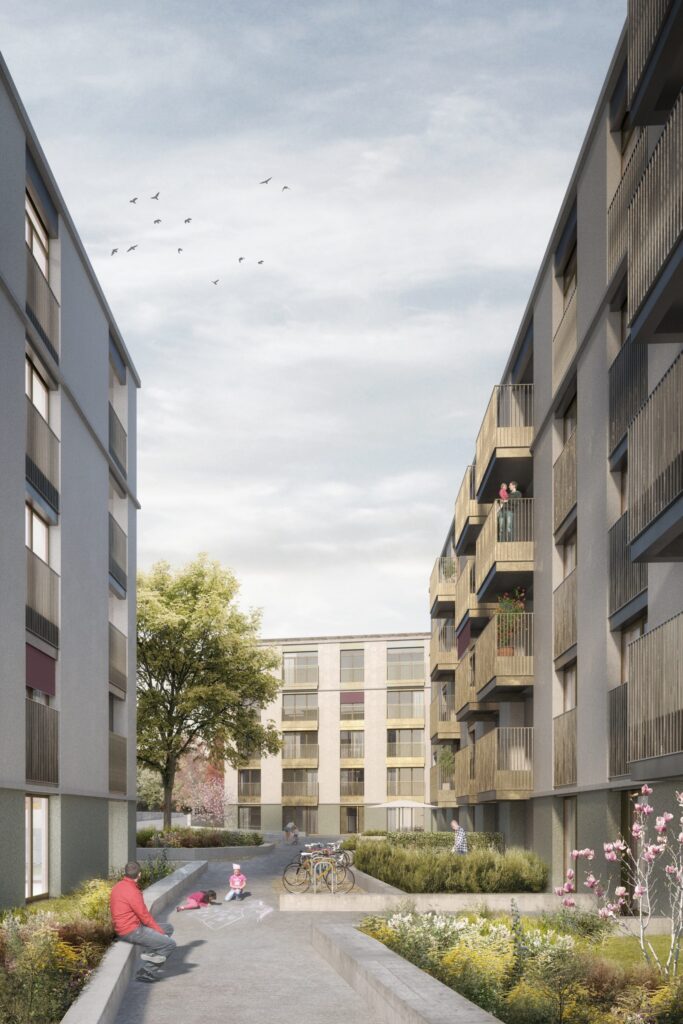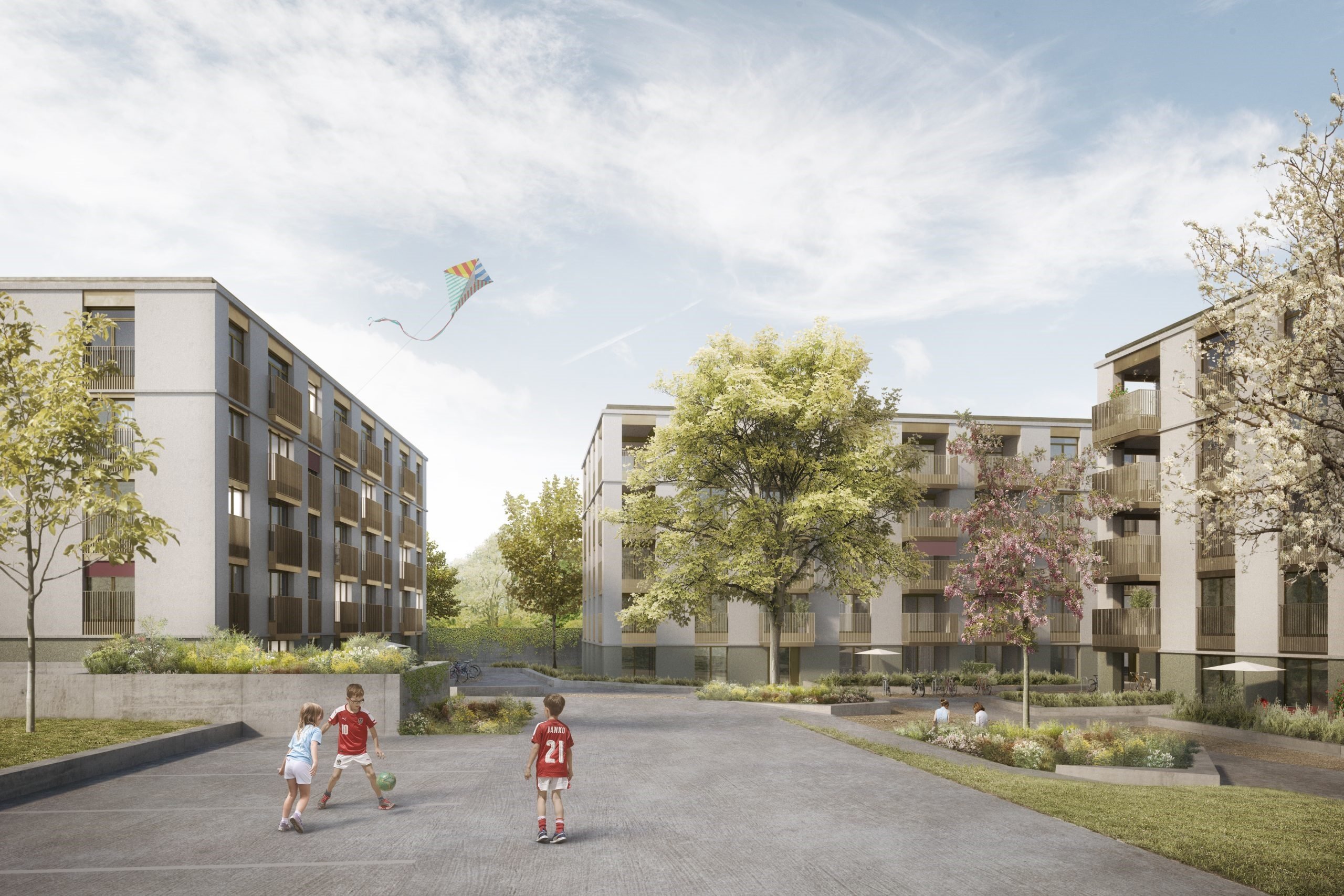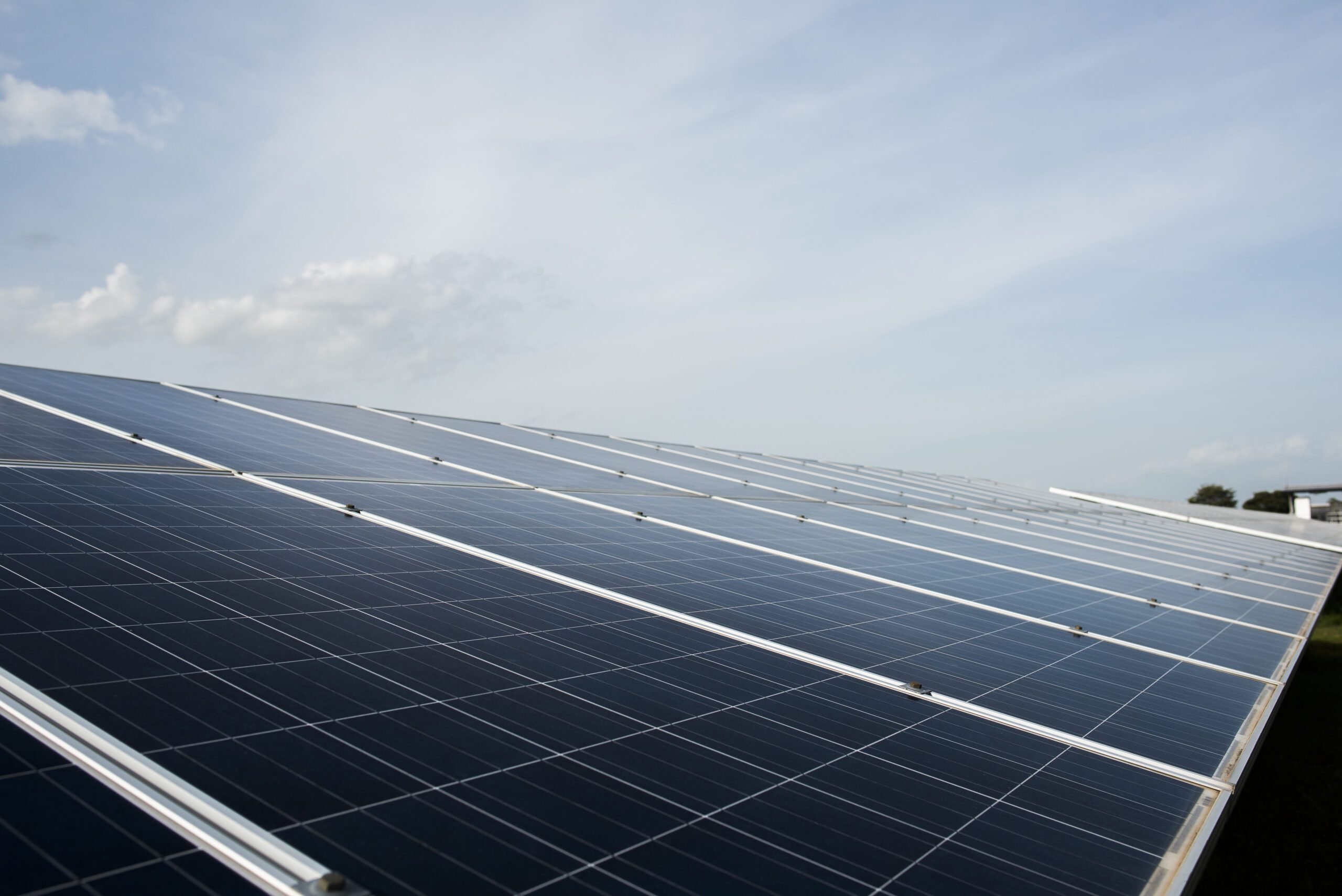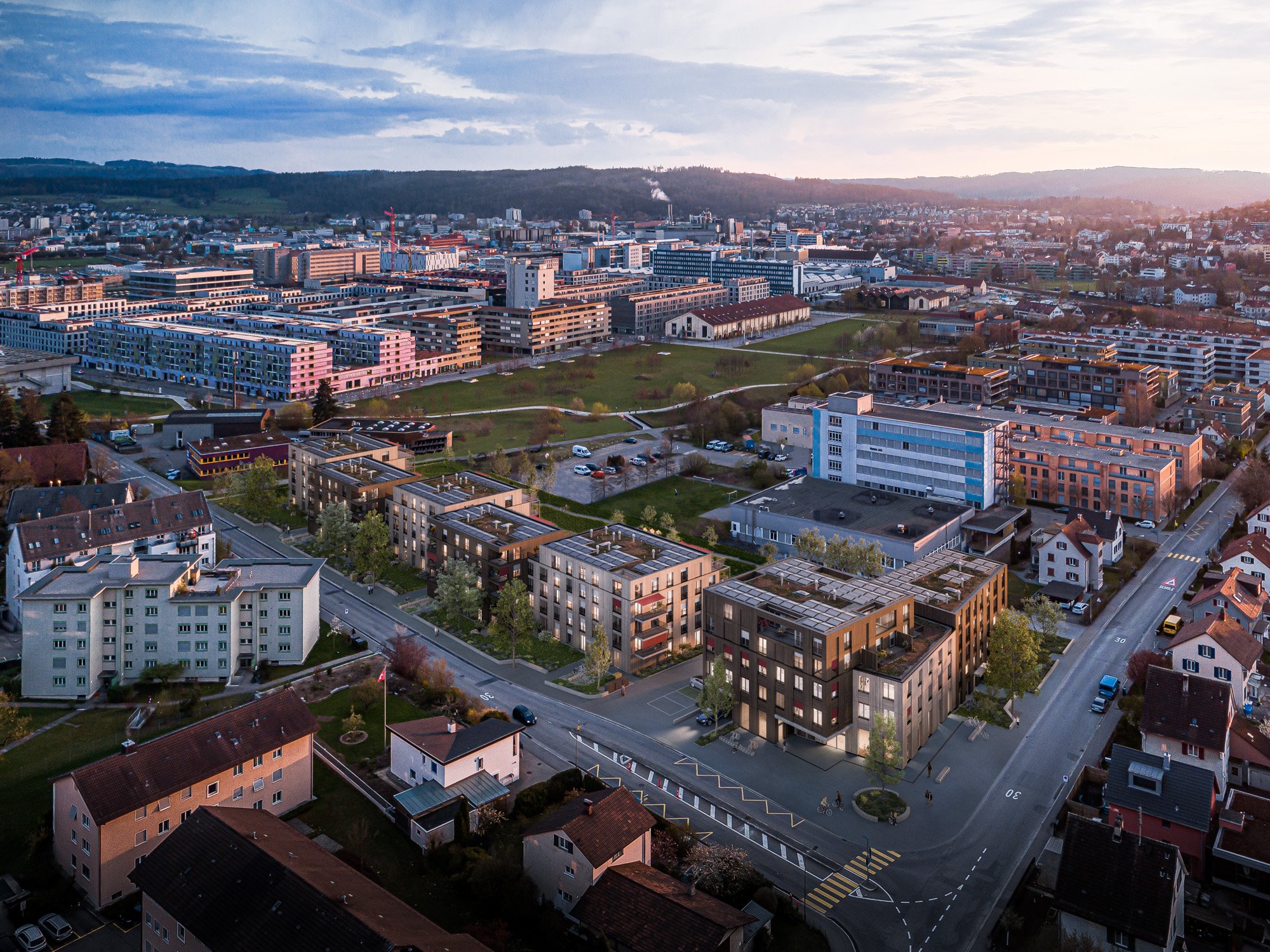Our path to sustainable energy solutions for real estate
Sustainability: As a responsible pension fund, it plays a role for us not only in our investments. In dealing with our real estate, too, long-term sensible use of available resources is increasingly taking center stage. And encounters an industry that can pull on numerous smaller and larger levers to take a step forward: energy renovations, renewal of heat generation systems without fossil fuels, retrofitting photovoltaic systems to generate electricity, climate protection and a growing demand for e-mobility are just some of the issues that concern us at Asga when it comes to sustainability in our properties.
There are more than 80 properties in our portfolio that are suitable for photovoltaic (PV) systems.With the simultaneous renewal of heating systems (e.g., through electricity-powered heat pumps) and a rapidly growing demand for charging infrastructure for electric vehicles, the requirements for energy systems in buildings are becoming more and more complex. However, with the increasing complexity also come opportunities: energy management systems as intelligent nodes of the overall energy solution are ideally suited to optimize different energy flows in a coordinated manner.
An energy management system (EMS) links the “big consumers” such as charging stations with the rest of the building installation. Currently, mainly boilers, heat pumps, charging stations, inverters and energy storage systems are controlled with the help of an EMS. In the future, the number of controllable consumers will continue to increase. An EMS always links at least two of these large consumers/production plants with intelligent control. Both the self-consumption can be increased and the expensive peak load can be controlled and optimized. In this way, costs can be saved and a significant contribution to the energy turnaround can be made.
Another plus point: Since the EMS records all energy flows in the building and the data can be retrieved in aggregated form, data procurement for billing and reporting is simplified. So the future belongs to an intelligent energy management system. And we, too, are banking on it: Used as needed and in a targeted manner, it will enable us to implement our real estate sites integrally and with sustainable overall energy solutions in the future.

Our EMS pilot project in Kreuzlingen
being built on the “Rüütiwise” site on Bleichestrasse in the Kurzrickenbach district of Kreuzlingen. On the one hand, the new buildings border on the historic village center with its half-timbered houses; on the other hand, the development is located in a convenient location and in the immediate vicinity of various stores, the Migros shopping center “Seepark” as well as bus and train stops.
The ensemble of three 5-story buildings with a total of 74 studios, 1.5-, 2.5- and 3.5-room residential units in upscale rental housing standard as well as a common underground parking garage with 72 parking spaces will be built according to the Minergie standard (without certification), has a photovoltaic system with maximum occupancy on the flat roofs, heat pump heating as well as two e-charging stations with 22 kW AC charging capacity each and one e-charging station with 50 kW DC charging capacity – quite a first in rental housing construction. In addition, the subsequent creation of a battery storage system has already been incorporated into the electrical planning. For the first time, an EMS will be used, which acts as an intelligent node to control and optimize all energy flows. In this way, we are setting the course for sustainable and climate-friendly energy management.
Auch interessant

Energy Management System
Real estate

A sunny outlook – how Asga’s roofs help protect the climate
Real estate, Capital investments, Capital investments, Real estate

A co-operative out of conviction
Asga, Employer

AsgaOnline: The practical, easy way to manage your company’s occupational benefits
Employer

How we acquire properties
Capital investments, Real estate